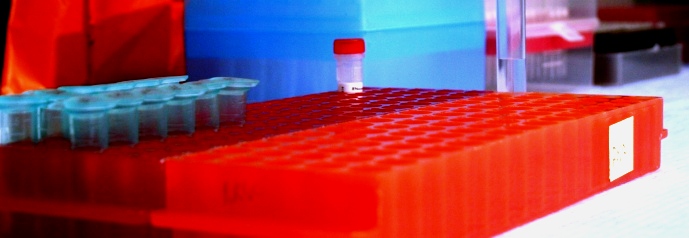Primers

The Sequencing Facility provides the standard primers listed below free of charge. Please let us know if there are other primers that you will be using with great frequency. We will consider adding them to our list.
Check to make sure that the sequence of our primers matches your priming site exactly as even single base mismatches may compromise the quality of your sequencing results.
| pUC/M13 Forward | 5'{CGCCAGGGTTTTCCCAGTCACGAC}3' |
| pUC/M13 Reverse | 5'{TCACACAGGAAACAGCTATGAC}3' |
| Sp6 | 5'{GATTTAGGTGACACTATAG}3' |
| T3 | 5'{ATTAACCCTCACTAAAGGGA}3' |
| T7 Promoter | 5'{TAATACGACTCACTATAGGG}3' |
| T7 Terminator | 5'{GCTAGTTATTGCTCAGCGG}3' |
| EGFP-N | 5'{CGTCGCCGTCCAGCTCGACCAG}3' |
| EGFP-C | 5'{CATGGTCCTGCTGGAGTTCGTG}3' |
| DsRed1-N | 5'{GTACTGGAACTGGGGGGACAG}3' |
| DsRed1-C | 5'{AGCTGGACATCACCTCCCACAACG}3' |
| pcDNA3.1/Reverse | 5'{TAGAAGGCACAGTCGAGG}3' |
Selecting Custom Sequencing Primers
The choice of sequencing primer sequence, method of primer synthesis and approach to primer purification can have a significant effect on the quality of the sequencing data obtained in dye terminator cycle sequencing reactions.
The following list represents guidelines to consider when designing sequencing primers.
- Primers should be 18-24 bases long to ensure good hybridization
- The G-C content should range from 40-60%
- The primer Tm should range from 50-60oC
- Primer design should only occur in regions of unambiguous sequence
- Avoid homopolymeric regions in primer design. This is especially true of G rich regions because they can form secondary structures and primers can hybridize to form primer-dimers.
- If possible run a computer seach against the vector and insert DNA sequences to verify the primer and especially the 8-10 bases of its 3' end are unique
- Desalted primers work better than those that are not desalted.
Several good primer design websites exist. These include:
CODEHOP
PCR Jump Station








